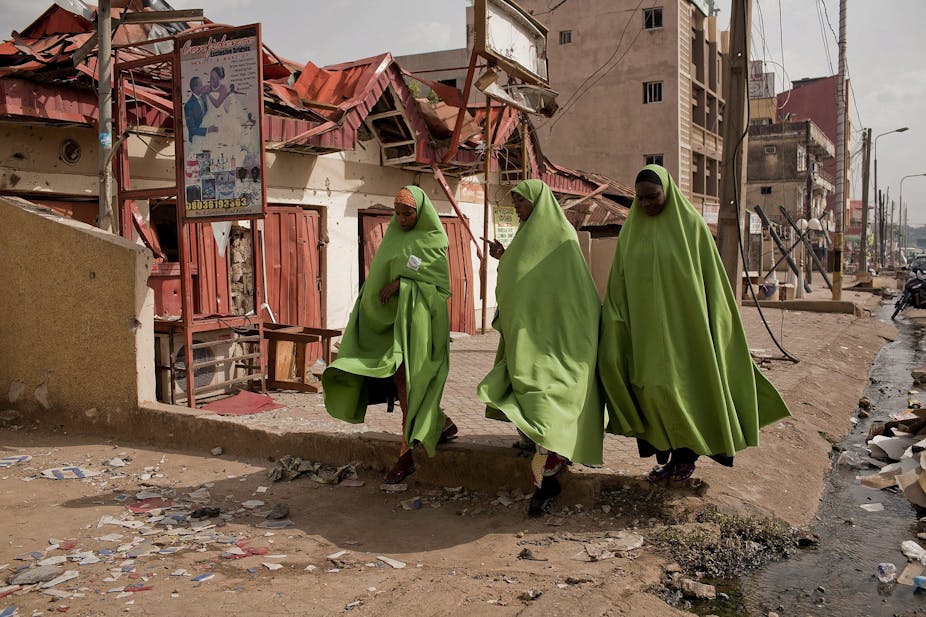In part 10 of the multi-disciplinary Millennium Project series, Alex Burns argues that we are getting more sophisticated in our approach to global threats and conflict.
Global challenge 10: How can shared values and new security strategies reduce ethnic conflicts, terrorism, and the use of weapons of mass destruction?
International research programs seek to provide policymakers with actionable insights about transnational security threats. Terrorism, ethnic conflicts, and the potential proliferation of weapons of mass destruction are wicked problems which have shaped the past decade of research agendas. New research suggests converging strategies to anticipate and deal proactively with trans-national security threats.
The Obama administration’s counterterrorism agenda is shaped by Osama bin Laden’s death at Abottabad, Pakistan on 2nd May 2011; the increased use of robot drones; and speculative fears of cyber-warfare attacks. Overlooked is Obama’s National Strategy for Countering Biological Threats. Gregory Koblentz contends in International Affairs that Obama’s strategy is preventative; that its definition of biosecurity focuses on improving global health security (pandemics and disease prevention); and that intelligence and law enforcement personnel must work more closely with the life sciences and public health. Obama has shifted from the Bush administration’s focus on attack prevention to strengthening multilateral treaties and improving organisational coordination.
The changing international environment also influences how law enforcement and judicial researchers view transnational terrorism. John T. Picarelli of the United States Department of Justice suggests in Terrorism and Political Violence that organised criminal organisations are undergoing threat convergence: long-term cooperation between the two types of groups which increasingly resemble each-other. However, Picarelli also found that there is little basic research and empirical datasets. Historical and international political economy methods may provide greater analytical clarity whilst datasets would enable integration with geographic information system mapping.
In contrast to terrorist threat convergence, a data-driven approach yields research insights about the causes of ethnic conflicts. The UCDP/PRIO Non-State Conflict Dataset hosted at Uppsala University’s Department of Peace and Conflict Research provides new insights into “communal and organised armed conflict where none of the parties is the government of a state.” The dataset examines the period 1989-2010 and covers communal, ethnic, and paramilitary conflicts. It is part of a UCDP/PRIO collection of datasets on conflict.
Uppsala University’s Ralph Sundberg, Kristine Eck, and Joakim Kreutz have used the dataset to examine Somalia’s ethnic conflict after the end of Siad Barre’s regime in 1991. Sundberg, Eck and Kreutz found a series of overlapping conflicts in Somalia: clan and tribal fighting motivated by scarce resources, organised militias that split into warring factions, and state-based conflict that occurs primarily in urban areas. Somalia’s conflict thus has a range of actors and geographic-specific forms of political violence.
Nigeria since the 1960s has experienced ethnic conflicts. Ray Ikechukwu Jacob recently estimated in Asian Social Science that 50,000 Nigerians were killed between 1999 and 2004, and 800,000 people were displaced. Jacob contends that Nigeria’s recent ethnic conflicts are based on unintended consequences of the 1946 Richards Constitution (named after Britain’s then colonial administrator, Governor Arthur Richards) which enabled “unity in diversity”, or a range of religious beliefs in different regions. This legislative implementation created the conditions for conflict between Christian militias, Sunni and Shiite Muslims, and rival armed gangs who established a kidnap and ransom market amidst high unemployment and problems with Nigeria’s judiciary and law enforcement. The decision of northern states to implement Shari’a law and to marginalise Christians means that ethnic conflict is traceable to political decision-making and leadership manipulation.
2011 marked the tenth anniversary of Al Qaeda’s terrorist attacks on September 11, and the October 2001 anthrax letter incidents. Two international organisations — the Seventh Biological Weapons Convention (BWC) Review Conference and the G8 Global Partnership Against the Spread of Weapons of Mass Destruction — made progress on counter-proliferation strategies for non-state actors. Gerald Epstein of the American Association for Advancement of Science counsels in The Bulletin of Atomic Scientists that counter-proliferation initiatives should augment their threat-based approach with partner-based awareness of the life sciences and other emerging areas of scientific research.
Dr Jorge Morales Pedraza, formerly of the International Atomic Energy Agency, this year proposed in the journal Public Organization Review an Organisation for the Prohibition of Biological Weapons (OPBW) within the United Nations system. The OPBW would supervise the BWC’s implementation by UN member nation-states. It would strengthen the BWC’s verification mechanisms, which the United States fears could be used for foreign espionage in biotechnology, pharmaceuticals, the life sciences, and other sensitive industries. Pedraza’s proposed OPBW would help the UN to foresee and adapt to a changing international environment.
Collectively, this new research points to a convergence of new strategies to deal with transnational security threats. Academic researchers are using empirical datasets and mixed-method designs to understand terrorism, ethnic conflicts, and the potential proliferation of weapons of mass destruction in new ways. Policymakers are building on shared values to strengthen multilateral treaty conventions and international organisations. Both academics and policymakers are adapting to a more complex global environment, and new strategies of resilience have displaced threat preparation.
Comments welcome below.

